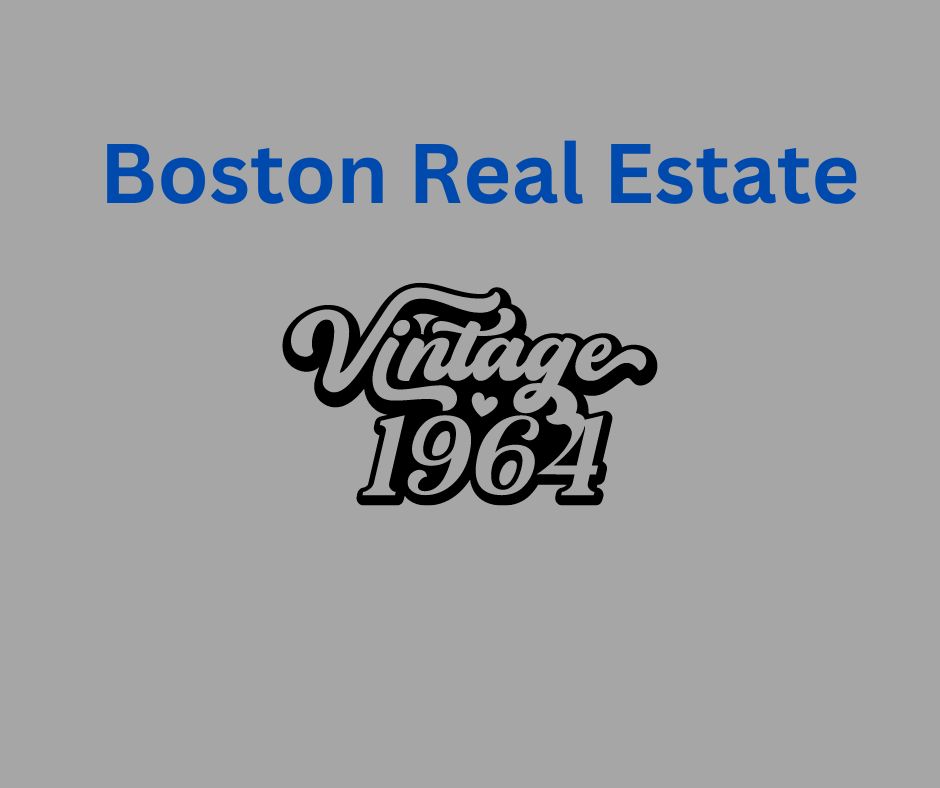By Anne-Marie Greenberg, Realtor
As I celebrate my 60th birthday today, let’s discuss how the real estate landscape in the greater Boston area has evolved over the past six decades. The journey from then to now is not just a timeline of transactions but a testament to the region’s growth, shifting demographics, and economic trends. Join me as we take a stroll down memory lane to explore what the real estate market looked like 60 years ago.
Popular Areas to Live:
In the early 1960s, the greater Boston area boasted several neighborhoods and suburbs that were highly sought after for their charm, accessibility, and amenities. While neighborhoods like Beacon Hill and Back Bay in Boston proper exuded elegance and prestige, suburbs such as Newton, Brookline, Wellesley, and Lexington were experiencing a surge in population as families sought larger homes and green spaces outside the city center.
Movement Patterns:
Suburbanization was a significant trend during this period, driven by families seeking a better quality of life and more space to raise their children. The allure of suburban living led to the development of communities like Newton, known for its excellent schools and tree-lined streets, and Lexington, with its rich history and top-rated school system.
Booming Areas:
While Boston proper remained a cultural and economic hub, suburbs like Cambridge, Somerville, and Jamaica Plain were emerging as desirable destinations for young professionals and families seeking a blend of urban amenities and suburban tranquility. Cambridge, in particular, home to Harvard University and MIT, was experiencing a renaissance as an intellectual and cultural center.
Interest Rates:
Interest rates in the 1960s were relatively stable, hovering around 5-6% for a 30-year fixed-rate mortgage. This favorable financing environment incentivized homeownership and fueled demand in both urban and suburban real estate markets.
Typical Family Home:
A typical family home in the greater Boston area 60 years ago often featured traditional New England architecture, such as Cape Cod or Colonial-style houses. These homes typically had three to four bedrooms, one or two bathrooms, and ample yard space for children to play. In the suburbs, ranch-style homes were gaining popularity for their modern design and single-level living.
Style of Homes and New Enhancements:
During the 1960s, ranch-style homes were gaining popularity in the suburbs for their single-level living and modern design. These homes often featured open floor plans, large windows, and attached garages. In addition to architectural changes, new enhancements such as central heating, air conditioning, and updated kitchen appliances were becoming standard features, catering to the growing demands of modern living.
Buyers’ Preferences:
Buyers in the 1960s were looking for homes that offered both comfort and convenience. Proximity to schools, shopping centers, and transportation hubs was crucial, reflecting the changing lifestyle needs of suburban families. The allure of suburban living, with its promise of space, safety, and community, attracted buyers seeking a respite from the hustle and bustle of city life.
Neighborhoods’ Characteristics:
Neighborhoods in the greater Boston area were characterized by tight-knit communities, where neighbors knew each other by name and looked out for one another. Local parks, playgrounds, and community centers served as gathering spots for families and fostered a sense of belonging.
As I reflect on the real estate market of yesteryears in the greater Boston area, I’m reminded of the resilience and enduring appeal of this historic region. While much has changed over the past six decades, the essence of what makes the Boston area special remains intact. From the cobblestone streets of Beacon Hill to the bustling neighborhoods of Cambridge, the spirit of community and opportunity continues to define our region.
As I celebrate this milestone birthday, I am grateful to have been a part of the Boston area’s real estate journey for the past 20 years and look forward to many more years of helping families find their place in this ever-evolving landscape.


 Facebook
Facebook
 X
X
 Pinterest
Pinterest
 Copy Link
Copy Link
